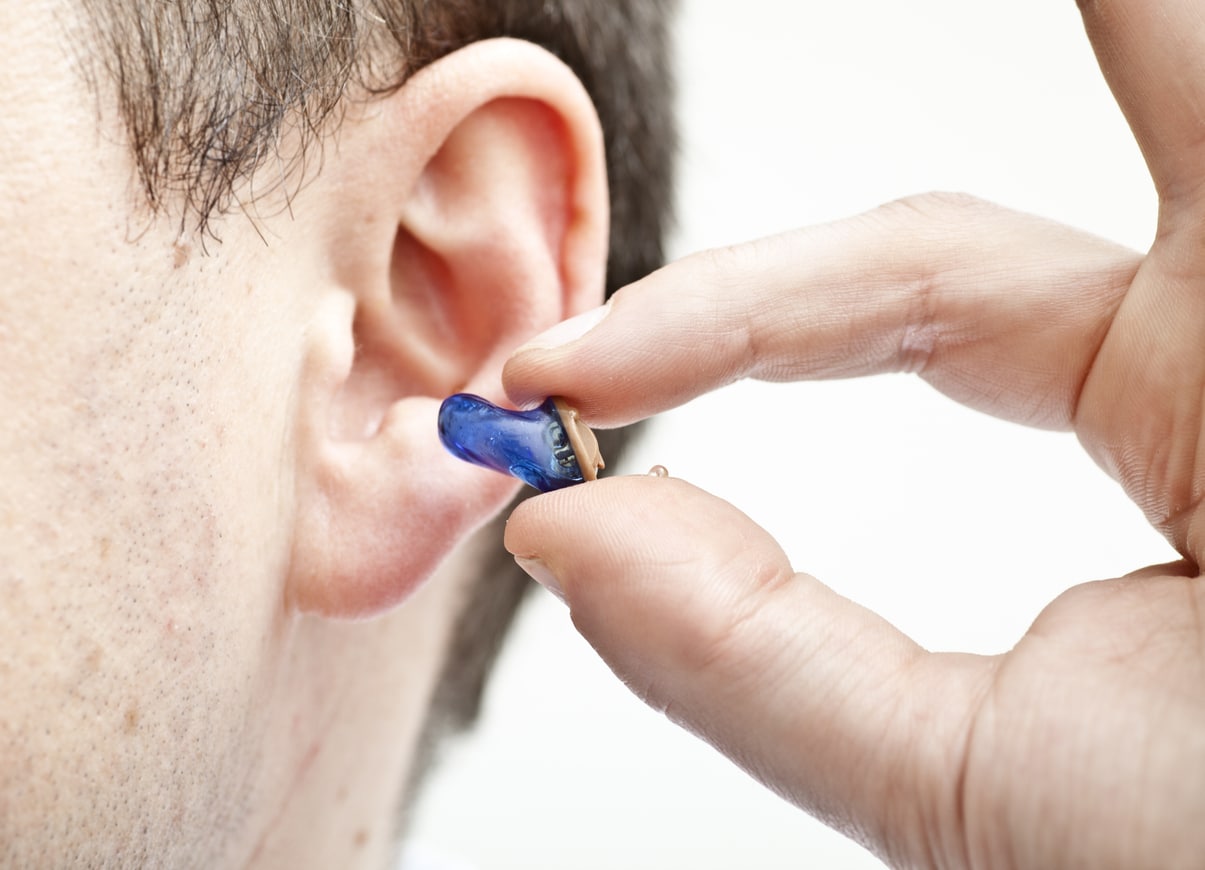How to Adjust to Hearing Aids for Mild Hearing Loss: Tips for a Smooth Transition

Mild hearing loss, affecting roughly 25% of adults aged 65–74, can make it challenging to hear soft sounds like whispers or distant conversations, leading to communication struggles and social withdrawal. Hearing aids for mild hearing loss offer a transformative solution, amplifying sound to restore clarity and enhance quality of life. However, adapting to these devices requires patience, as the brain needs time to adjust to amplified sounds. Typically, this adjustment period lasts 30–60 days. This article provides practical advice for new users of hearing aids for mild hearing loss, covering how to manage expectations, optimize fit, and ease into daily use, complete with a sample routine to ensure a smooth transition.
Understanding the Adjustment Period
When you first start using hearing aids for mild hearing loss, sounds may feel overwhelming or unnatural. This is normal, as your brain, accustomed to reduced auditory input, must relearn how to process amplified sounds. According to the National Institute on Deafness and Other Communication Disorders (NIDCD), it takes about 30–60 days for most users to fully adapt. For mild hearing loss, where the loss is subtle (20–40 dB), hearing aids like the Signia Silk X or Phonak Audeo Lumity provide gentle amplification, but even these can initially make background noises—like rustling paper or footsteps—seem loud.
The adjustment period varies by individual, influenced by factors like motivation, frequency of use, and professional support. A 2021 study in Ear and Hearing found that consistent wear (8+ hours daily) and audiologist guidance significantly improve adaptation success. By setting realistic expectations and following structured steps, new users can make the transition smoother and maximize the benefits of hearing aids for mild hearing loss.
Read more: Pros and Cons of Buying Used Zero Turn Mowers on Craigslist vs. Dealers
Managing Expectations
Adapting to hearing aids for mild hearing loss isn’t instantaneous, and understanding what to expect can prevent frustration:
-
Initial Overload: Sounds like your own voice, kitchen noises, or traffic may feel too loud or “tinny” at first. This “occlusion effect” (feeling like your ears are plugged) is common with in-the-canal models and usually subsides within weeks.
-
Gradual Improvement: Speech clarity improves over time as your brain adjusts. You may not notice dramatic changes immediately, especially with mild loss, where deficits are subtle.
-
Social Benefits Take Time: Engaging in group conversations or noisy settings, like restaurants, may remain challenging initially but improves with practice.
-
Not a Cure: Hearing aids enhance sound but don’t restore perfect hearing. They work best when paired with communication strategies, like facing speakers or reducing background noise.
Setting these expectations helps users stay committed. As one Reddit user shared, “It took me six weeks to love my Oticon aids for mild loss, but now I can’t imagine life without them.”
Read more: Best Website to Buy Medical Equipment: Explore Top 5
Practical Tips for a Smooth Transition
To ease into using hearing aids for mild hearing loss, follow these evidence-based tips, drawn from audiologist recommendations and user experiences:
-
Start in Quiet Environments
Begin wearing your hearing aids at home, where sounds are predictable, to acclimate to amplification. For example, listen to a podcast or talk with a family member in a quiet room. A 2020 Journal of the American Academy of Audiology study found that starting in low-noise settings reduces sensory overload and speeds adaptation. Gradually introduce noisier environments, like coffee shops, after 1–2 weeks. -
Wear Them Consistently
Aim for 8–12 hours daily, even if it feels strange initially. Consistent use helps your brain adapt faster, as noted in a 2019 International Journal of Audiology study. If discomfort arises, take short breaks (15–30 minutes) but avoid skipping days. Devices like the Widex Moment, with comfortable open-fit designs, are ideal for all-day wear in mild loss cases.
-
Work with an Audiologist for Fine-Tuning
Schedule follow-up visits (typically at 1, 3, and 6 weeks) to adjust settings. Audiologists can tweak volume, frequency response, or noise reduction to match your needs. For instance, the Starkey Genesis AI allows real-time adjustments via smartphone apps, ensuring optimal performance. Bring notes on specific challenges, like difficulty hearing in groups, to guide fine-tuning. -
Clean Devices Regularly
Proper maintenance prevents performance issues and extends device lifespan (4–7 years). Clean hearing aids for mild hearing loss daily with a soft, dry cloth and a brush (included with models like ReSound Nexia) to remove earwax or debris. Use a dehumidifier case overnight to prevent moisture damage, especially for in-the-canal aids like Signia Silk X. Replace wax guards monthly ($5–$10 for a pack). -
Practice Active Listening
Engage in listening exercises to retrain your brain. Read aloud to adjust to your amplified voice or listen to audiobooks to practice speech recognition. Apps like Auditory Training (free on iOS/Android) offer exercises tailored for mild hearing loss, improving sound discrimination over time. -
Manage Background Noise
Modern hearing aids for mild hearing loss, like the Phonak Audeo Lumity, use AI to filter background noise, but noisy settings can still be challenging. Start with small gatherings and use directional microphone settings (adjustable via apps) to focus on speakers. Reduce ambient noise at home by closing windows or turning off TVs during conversations. -
Leverage Technology
Many hearing aids offer Bluetooth for streaming calls or music, enhancing usability. For example, the Oticon Opn Play connects to smartphones, making phone conversations clearer. Explore apps for remote adjustments or tutorials, like Signia’s app, to customize settings on the go. -
Join Support Communities
Connect with other users via online forums (e.g., Reddit’s r/HearingAids) or local support groups. Sharing experiences, like tips for handling noisy restaurants, can boost confidence and provide practical advice.
Sample Daily Routine for New Users
This one-week routine helps new users of hearing aids for mild hearing loss build comfort and confidence:
-
Day 1–2: Home Base (4–6 hours daily)
-
Morning: Wear hearing aids during breakfast, listening to a radio or podcast. Note any discomfort.
-
Afternoon: Practice a 10-minute listening exercise (e.g., reading aloud or using an auditory training app).
-
Evening: Clean aids and store in a dehumidifier. Journal sound experiences to discuss with your audiologist.
-
-
Day 3–4: Expanding Comfort (6–8 hours daily)
-
Morning: Wear aids during a quiet walk, noting environmental sounds like birds or footsteps.
-
Afternoon: Have a one-on-one conversation with a friend at home, using directional microphone settings.
-
Evening: Stream a phone call or music via Bluetooth to explore features. Clean aids and replace wax guards if needed.
-
-
Day 5–7: Social Settings (8–10 hours daily)
-
Morning: Wear aids during a short outing, like a grocery store, to test low-noise public settings.
-
Afternoon: Attend a small family gathering, adjusting volume via the app if needed. Note challenges for your audiologist.
-
Evening: Review the week’s progress, clean aids, and schedule a follow-up visit for fine-tuning.
-
Considerations and Costs
Adapting to hearing aids for mild hearing loss involves some practical considerations:
-
Cost: Prescription aids range from $1,000–$3,000 per pair, while over-the-counter (OTC) models like Sony CRE-C10 cost $900–$1,600. Medicare Advantage plans (e.g., Humana via TruHearing) may offer copays as low as $699 per aid.
-
Maintenance: Budget $50–$100 annually for batteries, wax guards, and cleaning supplies. Rechargeable models, like ReSound Nexia, reduce battery costs but may cost $50–$100 more upfront.
-
Trial Period: Most providers offer a 30–45-day trial, allowing returns if adaptation proves difficult.
-
Professional Support: Audiologist visits ($100–$200 without insurance) are crucial for fitting and adjustments, especially for mild loss where precision is key.
Real-World Impact
Take Sarah, a 60-year-old teacher with mild hearing loss, who struggled to hear students in class. She started with Signia Silk X hearing aids ($2,200/pair) and followed a structured routine, wearing them 8 hours daily and practicing listening exercises. After a month, with two audiologist adjustments, she could hear soft voices clearly and felt less fatigued. The discreet design boosted her confidence, and Bluetooth streaming enhanced her enjoyment of webinars. Sarah’s experience shows how dedication and support make hearing aids for mild hearing loss life-changing.
Conclusion
Adjusting to hearing aids for mild hearing loss requires patience, but with the right approach, the 30–60-day transition can lead to clearer communication, reduced fatigue, and renewed social engagement. By starting in quiet environments, wearing aids consistently, working with an audiologist, and maintaining devices, new users can adapt successfully. The sample routine provided offers a practical roadmap, while modern features like Bluetooth and AI noise reduction make hearing aids for mild hearing loss user-friendly. Ready to embrace better hearing? Schedule an audiologist visit, start your trial period, and follow these tips to make your hearing aids a seamless part of your life!










